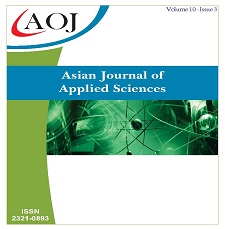The Development of Mathematical Learning Models that Utilize Multiple Intelligence of Junior High School Children in Takalar District
DOI:
https://doi.org/10.24203/ajas.v10i3.6996Keywords:
Model Book, Multiple Intelligence, Thiaragan (4D)Abstract
This research is development research which aims to develop mathematics learning device based on project with role playing method in social Arithmetic material in class VII at SMP which is valid, practical and effective. The referred learning devices cover: (1) lesson plan, (2) student’s book, (3) project worksheet, and (4) assessment sheet. The model of development device which was used in this research adopted from Plomp which covered five stages, namely: (1) pre-investigation, (2) design, (3) realization/construct, (4) test, evaluation, and revision, and (5) implementation. However, this research was conducted until stage (4) so that the result only obtained the final prototype of a learning device which was ready to be implemented widely. After testing the validity and reliability, the whole components of the learning device and instrument (prototype) were stated as valid and reliable with minor revision. Thus, revision and correction were done based on the suggestions from the experts and obtained prototype II, and then tested. The testing process was done to produce practical and effective device. In testing process, the device which was produced had already been practical because all aspect in the device component mostly implemented. The device also considered effective because the students’ activity had fulfilled the set criteria, the teachers’ ability in learning management was in high category, mostly the students gave positive response toward the learning based on project with role playing method in social arithmetic material, and all the students had reached the minimum mastery criteria. Thus, the developed learning device fulfilled the terms of appropriateness, practical and effectiveness. Based on the implications of the result of this research it is suggested that: (1) the researchers who wish to develop further study, are expected to notice the research limitations, so that the next research can complete the result of this study, and (2) the development of the learning device such this type should done to other topics to make students interested, enjoy, and active, which can construct their knowledge in learning Mathematics.
References
Minister of Education. Standard Process in the Implementation of Learning. Sect. concerning Standard Process in the Implementation of Learning in Three Aspects, namely attitude, knowledge and skills 2013.
Regulation of the Education Minister. Curriculum for Junior High School. Sect. Concerning Curriculum for Junior High School 2013.
Nurdin. Model Pembelajaran Matematika yang Membutuhkan Kemampuan Metakognitif untuk Menguasai Bahan Ajar. [Surabaya]: Universitas Negeri Surabaya; 2007.
Kunandar. Penilaian autentik : (penilaian hasil belajar peserta didik nerdasarkan kurikulum 2013). Jakarta: Raja Grafindo Persada; 2013.
Ministerial Decree. Guideline for Peparation of Minimum Service Standars. Sect. concerning Guidelines for Preparation of Minimum Service Standards for School Implementation in the Primary and Secondary Education Sector, 4 2001.
Plomp T, Nieveen NM. An introduction to educational design research: proceedings of the seminar conducted at the East China Normal University, Shanghai (PR China), November 23-26, 2007 [Internet]. 2010 [cited 2020 Mar 5]. Available from: http://www.slo.nl/downloads/2009/Introduction_20to_20education_20design_20research.pdf/download
Rochmad R. Desain Model Pengembangan Perangkat Pembelajaran Matematika. Kreano, Jurnal Matematika Kreatif-Inovatif. 2012 Jun 1;3(1):59–72.
Reigeluth CM, Carr-Chellman AA. Instructional-Design Theories and Models. Vol. Vol. III. Unites States of America: Routledge; 2009.
Downloads
Published
Issue
Section
License
Copyright (c) 2022 Karmila Karmila, Hamzah Upu, Suwardi Anas

This work is licensed under a Creative Commons Attribution-NonCommercial 4.0 International License.
- Papers must be submitted on the understanding that they have not been published elsewhere (except in the form of an abstract or as part of a published lecture, review, or thesis) and are not currently under consideration by another journal published by any other publisher.
- It is also the authors responsibility to ensure that the articles emanating from a particular source are submitted with the necessary approval.
- The authors warrant that the paper is original and that he/she is the author of the paper, except for material that is clearly identified as to its original source, with permission notices from the copyright owners where required.
- The authors ensure that all the references carefully and they are accurate in the text as well as in the list of references (and vice versa).
- Authors retain copyright and grant the journal right of first publication with the work simultaneously licensed under a Attribution-NonCommercial 4.0 International that allows others to share the work with an acknowledgement of the work's authorship and initial publication in this journal.
- Authors are able to enter into separate, additional contractual arrangements for the non-exclusive distribution of the journal's published version of the work (e.g., post it to an institutional repository or publish it in a book), with an acknowledgement of its initial publication in this journal.
- Authors are permitted and encouraged to post their work online (e.g., in institutional repositories or on their website) prior to and during the submission process, as it can lead to productive exchanges, as well as earlier and greater citation of published work (See The Effect of Open Access).
- The journal/publisher is not responsible for subsequent uses of the work. It is the author's responsibility to bring an infringement action if so desired by the author.


